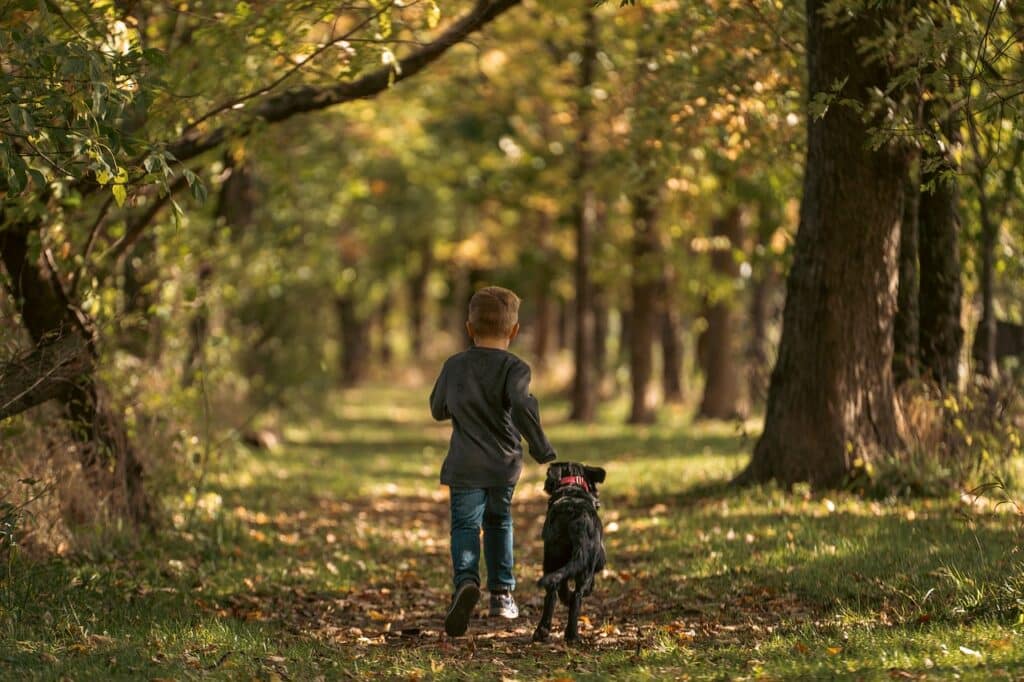Image provided by Pixabay
Both humans and dogs benefit greatly from physical activity. Several studies have proven that having an exercise buddy will not only provide motivation but better follow-up and success in attaining health-related goals. Dogs require both a physical and mental exercise; thus, they are at an added advantage on health-related benefits like increased lean muscle mass, reduction of body fat, and others. Here are a few things to keep in mind before you start running with your dog.
Get Started Running with Your Dog
1. Check Your Dog’s Fitness Level
While choosing how to work out your dog, his breed, age, and physical fitness should be accounted for. They are all integral in determining the extent and length of runs that can be done with your dog.
For example, because puppies’ bodies and coordination skills are still developing, keeping workouts short and on more forgiving terrain such as dirt, grass, and trails will help protect their growing bodies. After reaching skeletal maturity, walks and runs can gradually get longer and take place on sidewalks and asphalt.
2. Take Your Dog’s Breed Into Account
Toy and tiny breed dogs can appear energetic and quick-moving. However, they may not have the stamina of medium-sized breeds such as Australian Shepherds and Border Collies.
Many breeds intended for hunt and field trials, such as Golden Retrievers, Vizslas, and German Shorthair Pointers, may become ideal running companions with the proper endurance training.
Giant breeds, such as the Great Danes and Irish Wolfhounds, frequently struggle with distance running with your dog because to their massive bone structure.
Brachycephalic breeds, such as Dogs and French Bulldogs, require extra consideration since their short noses make breathing more challenging, especially during exercise.
3. Be Prepared
There are numerous items to consider before both you and your pet leave the house. Double-check the list to ensure that you have everything.
- Collar and leash/harness: These will assist you keep your dog under control and safe.
Chip and ID mark: Both of these are extremely necessary should your dog slips on his leash or gets rid of the harness. - Poop bags: Be an accountable pet owner by cleaning up after their waste. The environment, as well as your neighbors, will appreciate it!
- Weather Check: Humidity and heat can quickly reduce our dogs’ energy and stamina, but cold and snow require some adaptation.In the summer, asphalt and sidewalks can get sufficiently warm to burn the pads and ice.
4. Food is Fuel
Your dog’s performance outdoors is determined by what he or she is fed on the inside. Pro Plan Sport formulations are worth considering whether looking for the most nutritious dog food for active types that will power your dog’s runs or the finest puppy food for dogs who are active to get your new activity companion off to a good start.
5. Time Your Feedings
A dog’s stomach requires at least four to six hours to empty, therefore feeding your dog just before heading for a run is not recommended. Allowing them to calm themselves down and rest after the workout can also help prevent GI distress. Because of these possible concerns, it is recommended that you feed your dog many hours prior to or following activity.
Also Read : How to Stop a Dog’s Aggressive Behavior
6. Watch Body Language
Slowing behind and decreasing speed are symptoms that your dog is becoming fatigued. Dogs are unable to sweat, so they respire and use their mouths as a medium to dissipate body heat. The time and thickness of their mouth would distinguish whether they’re getting too heated. Giving them a water source will keep them hydrated and cool when moving around.
7. Give Them a Once-Over
Puppies possess a better pain tolerance than humans and frequently keep running regardless. That is why it is critical to evaluate them from nose to tail following each training session. Check for burns, cuts, or thorns on their feet, clean fur with no burrs or mats, and clear eyes, nose, and mouth.
8. Bring the Outside In
Finally, hiking, walking, and jogging are excellent methods of exercising your pet and provide an opportunity to interact with them in nature. If you are unable to go outside due to severe weather, you are still able to keep them active.
This will help them in developing a sense of hearing and smelling. Rehearsal of basic obedience commands like the words “sit” and “down” is rewarded with good behavior and serves as a sort of muscle training for them.
Now while our pets need physical activity, it is equally important to engage their brains too. So whoever said whatever, make sure to add a walk for recovery where they can smell, stop, and start on their own accord and observe many squirrels and fowl.
Every dog is unique, so talk to your veterinarian if you have any questions concerning your specific dog.

